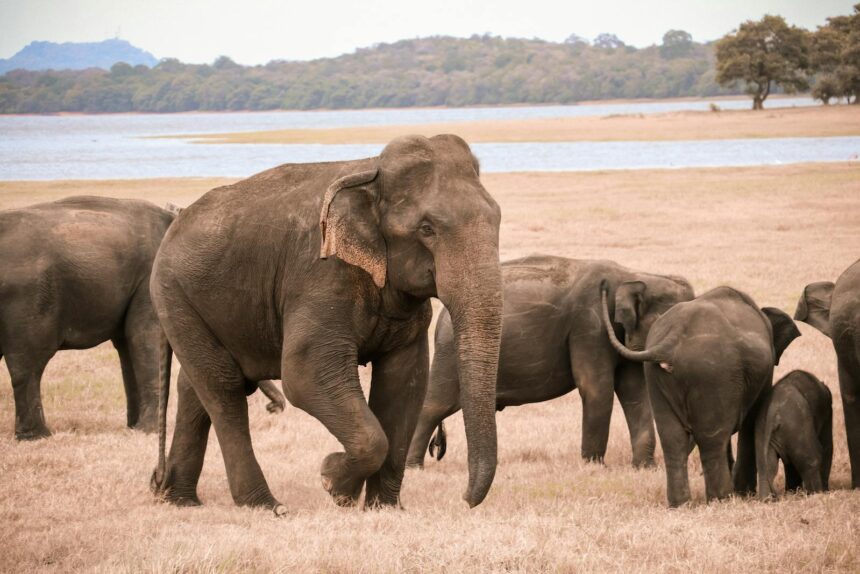Elephants are showing levels of intelligence that continue to amaze scientists. A study published in Royal Society Open Science reveals that elephants use intentional gestures to communicate, and they adjust those gestures depending on whether a human is paying attention. This skill was once thought to belong only to humans and great apes. The research challenges old assumptions about animal cognition and puts elephants in a small group of species capable of goal-directed communication. It suggests that using gestures with intent is not something unique to primates but a trait that can evolve independently in other intelligent, socially complex animals.
What Happened in the Study
The team of researchers wanted to see whether elephants communicate with a clear goal in mind. The study observed 17 semi-captive African savanna elephants in Zimbabwe using a simple food experiment with trays of apples. Elephants were shown two trays: one containing apples they wanted and one without. Then a human experimenter responded in three ways: fully giving the elephant the apples, partly giving them, or not giving any at all. The researchers expected that if elephants were communicating intentionally:
- The gestures would be aimed at someone paying attention.
- Elephants would keep trying when the first attempt didn’t work.
- They would change or add new gestures if the first ones failed.
The results matched these predictions. The elephants displayed 38 distinct gesture types and more than 300 individual gestures, including trunk pointing, posture changes, and directed movements toward the human or the apples, never empty trays. They used gestures almost exclusively when a human was watching. When the experimenter gave only part of the apples they wanted, they gestured more. When the first gesture didn’t work, they added new actions or changed their gestures.
This shows that elephants aren’t just reacting automatically. They actively assess whether their communication is effective and adjust it to reach a goal. Elephants clearly understand human attention and communicate with a specific intent. They persist when their first attempts fail and elaborate their gestures to achieve the desired outcome. This demonstrates a level of cognitive ability rarely seen outside humans and great apes.
Why This Matters for Science and Wildlife
This discovery reshapes how we think about animal intelligence. Elephants clearly understand attention and can use gestures with a purpose. It also suggests that this kind of communication may exist in other species that we haven’t fully studied yet. There are also implications for conservation. Recognizing that elephants can plan, persist, and adapt their actions gives a clearer picture of their intelligence. That understanding may increase the urgency to protect them. With complex social structures and cognitive skills, elephants are one of the most intelligent species on the planet, and this study adds even more evidence to support that.
Although this study focused on human-elephant interactions in controlled conditions, scientists stress the importance of observing these gestures in the wild, where similar behaviors could play a role in herd communication, bonding, or conflict resolution. Treating these gestures as communication rather than random movement may also enhance welfare and reduce human-elephant conflicts.







